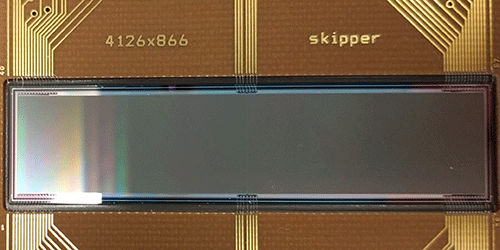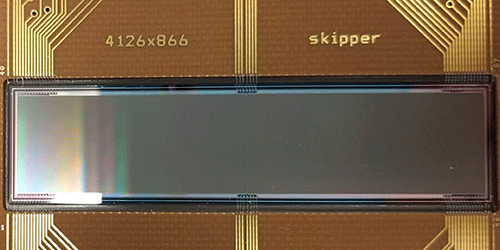Single-Electron Sensitivity in CCD Pixels
The charge-coupled device, or CCD, has become a standard tool for detecting photons in science and industry. When an incoming photon strikes a CCD pixel, its energy produces electron-hole pairs, and this resulting pixel charge is converted into a voltage, or readout signal. But the charge-to-voltage conversion is noisy, limiting CCD sensitivity. To reduce such readout noise, a new CCD readout design takes the average of multiple measurements. This so-called Skipper CCD can measure the pixel charge with single-electron precision, allowing single photons to be detected at optical and infrared wavelengths. The improved sensitivity also opens the possibility of searching for dark matter with CCD cameras.
Readout noise has been a long-standing problem for CCDs. Creating a measurable voltage signal from a small pixel charge requires strong amplification, which inevitably amplifies internal electronic noise as well. One solution—first proposed over 40 years ago—is to temporarily move a pixel’s charge into a “sense node” where it can be measured multiple times. Averaging over many measurements cancels out much of the internal noise. This Skipper-CCD technology has been experimentally tried before, but Javier Tiffenberg from Fermi National Accelerator Laboratory, Illinois, and his colleagues have optimized their system with better isolation from external noise sources. Their silicon-based device—consisting of pixels—can reduce pixel noise to 0.068 electrons by taking 4000 measurements per pixel. The readout time is several hours, but this could be an acceptable tradeoff for rare events, such as hypothetical dark matter particles interacting with silicon atoms. According to the team, a Skipper CCD could be an effective tool for exploring dark matter candidates in the largely uncharted mass range of a few eV to 10 GeV.
This research is published in Physical Review Letters.
–Michael Schirber
Michael Schirber is a Corresponding Editor for Physics based in Lyon, France.





